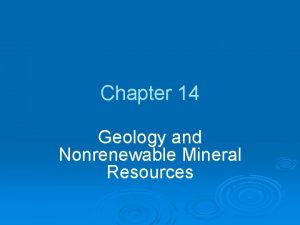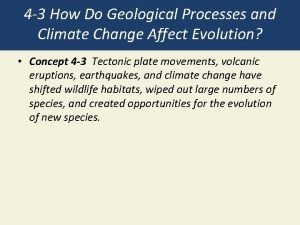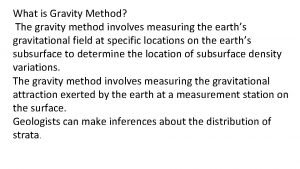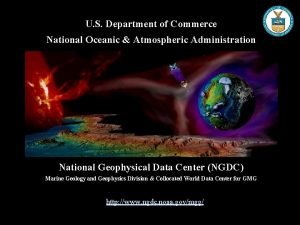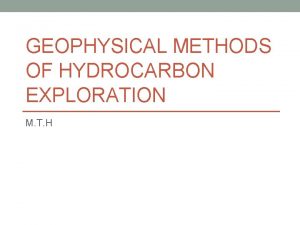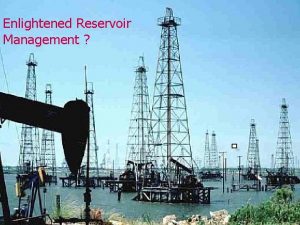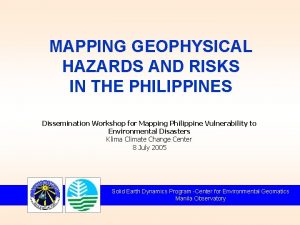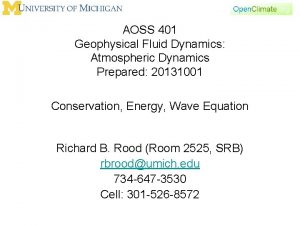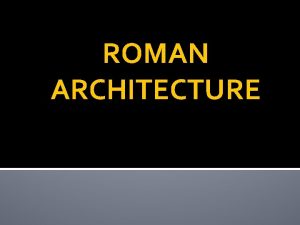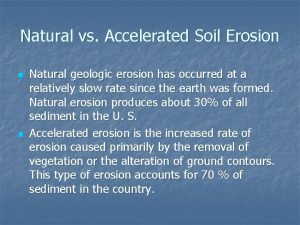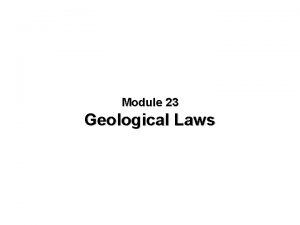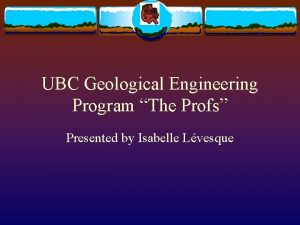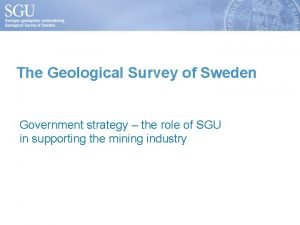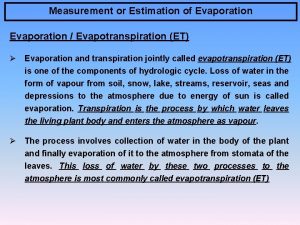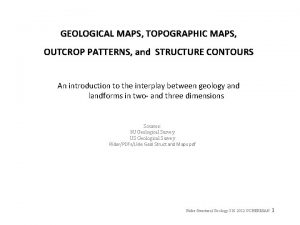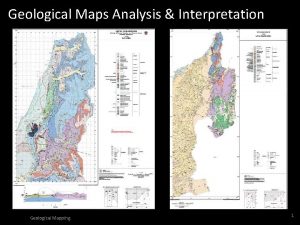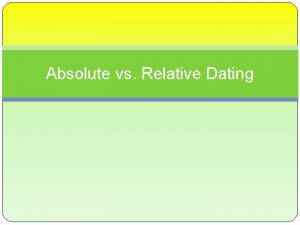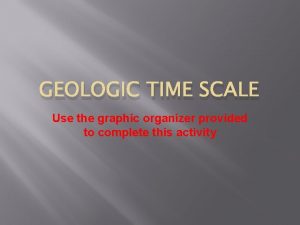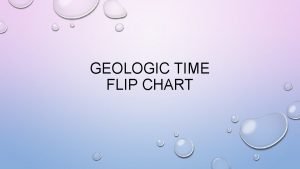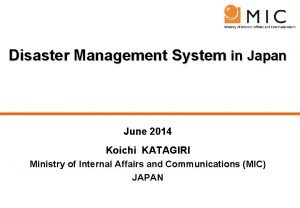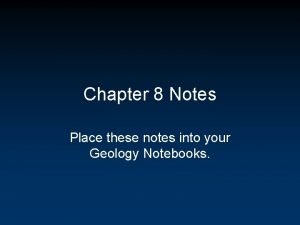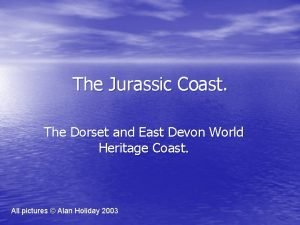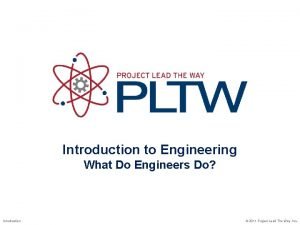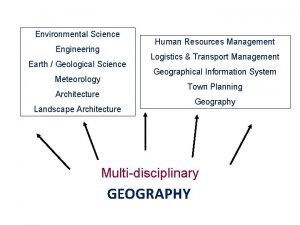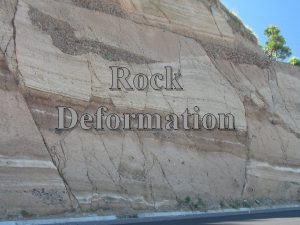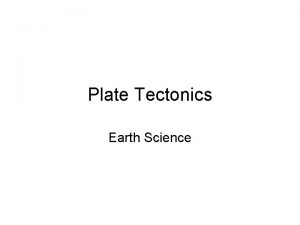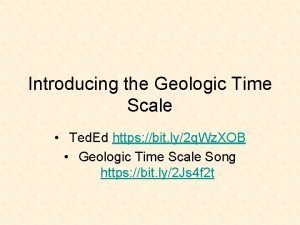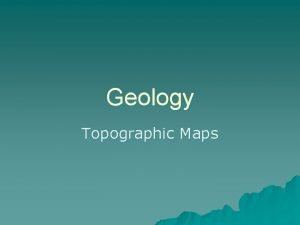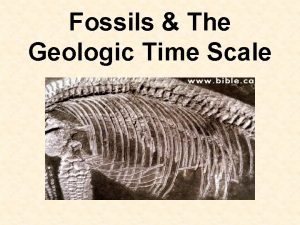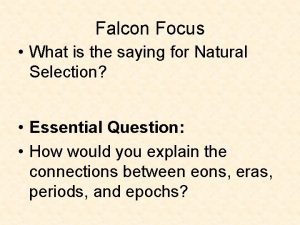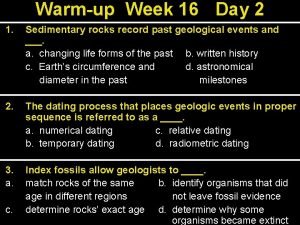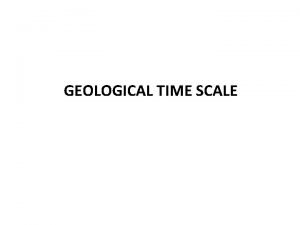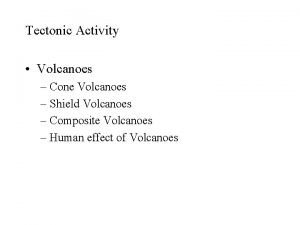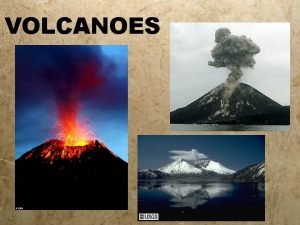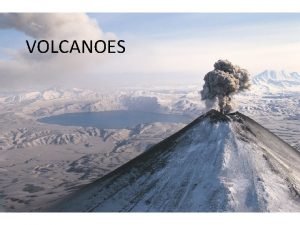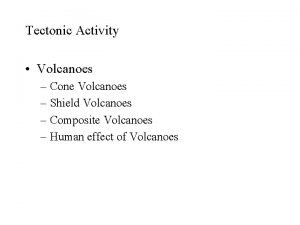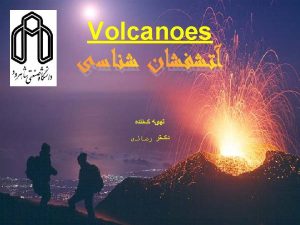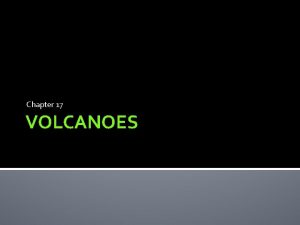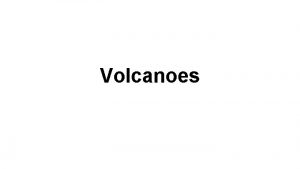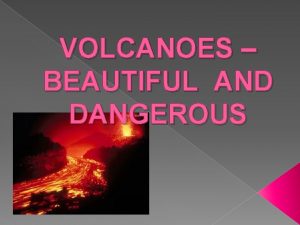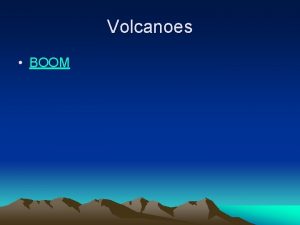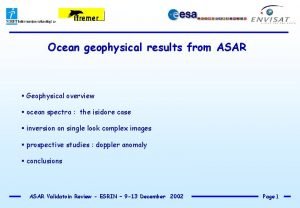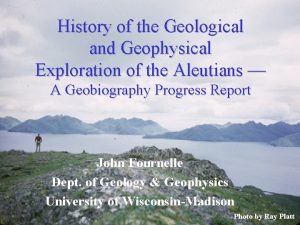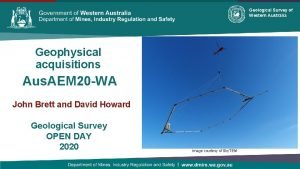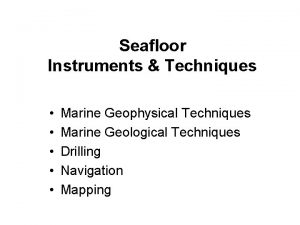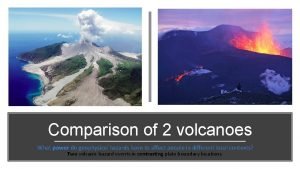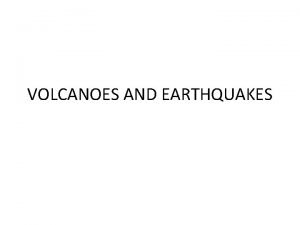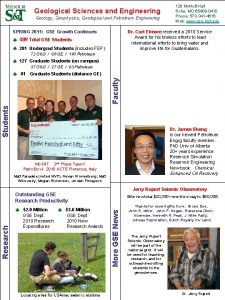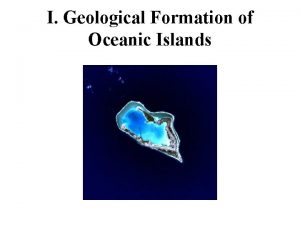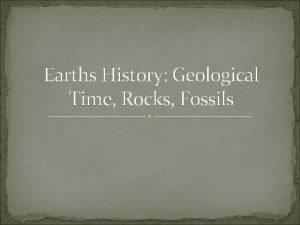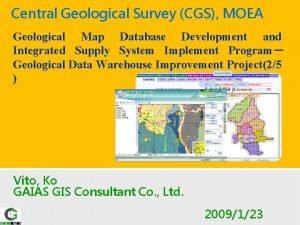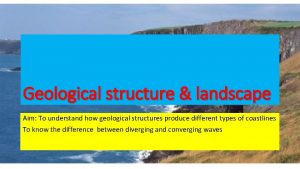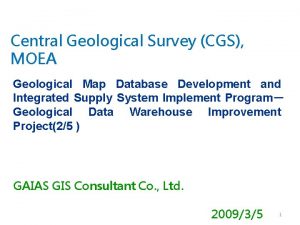Characteristics of Volcanoes Geophysical systems How geological processes

































- Slides: 33

Characteristics of Volcanoes Geophysical systems How geological processes give rise to geophysical events of differing type and magnitude Mechanisms of plate movement including internal heating, convection currents, plumes, subduction and rifting at plate margins Characteristics of volcanoes (shield, composite and cinder) formed by varying types of volcanic eruption; and associated secondary hazards (pyroclastic flows, lahars, landslides)

Enquiry Question How do volcanoes vary from place to place? Lesson Objectives: • To describe and explain the processes, features and hazards at different plate boundaries • To describe the characteristics of volcanoes including shield, composite and cinder • To explain the different types of volcanic eruption; and associated secondary hazards, including pyroclastic flows, lahars, landslides

Distribution of volcanoes KEY CONCEPT - How geophysical systems generate hazard risks for different places Describe the spatial distribution of volcanoes around the planet including the areas of highest concentration. (4)

Describe where the most dangerous volcanic areas are (in terms of human deaths) (4).

Plate Boundaries - Processes Use the website Tectonic settings and Volcanic activity to complete the worksheet to annotate a diagram of each plate boundary, explain the processes, the volcano type and the associated hazards

Task Create a short video (no longer than 2 minutes) to describe the formation of volcanoes in one of the selected area below including the key processes involved, the type of volcanoes formed and the associated hazards. Group 1 – Convergent/destructive (oceanic-oceanic) Group 2 – Convergent/destructive (continental – oceanic) Group 3 - Divergent/constructive Group 4 - Hotspots

Convergent (destructive) plate boundary Oceanic to continental https: //www. volcanodiscovery. c om/geology/subductionzones. html Where two plates collide, the heavier of the two - usually an oceanic one - sinks (or is pulled) under the other plate, a process called subduction. When the (typically very old) oceanic crust sinks back into the mantle in a subduction zone, it comes progressively under greater pressure and temperature. The magmas in subduction zone volcanoes are often explosive, because they arrive at the surface as very sticky (viscous) and gas rich. Volcanoes in subduction zones are typically explosive. Sometimes, they are also called "gray volcanoes" (as opposed to "red volcanoes"), because their eruptions often produce gray ash plumes rather than red hot fluid lava flows.

Divergent plate boundary Spreading-center volcanism occurs at rift-zones, where two plates are moving apart from each other. Most commonly this is the case at midoceanic ridges, where two oceanic plates move apart. Hot mantle material from the asthenosphere wells upward underneath. https: //www. volcanodiscovery. com/geology/p late-tectonics/divergent-boundaries. html

The asthenosphere • Asthenosphere, zone of Earth’s mantle lying beneath the lithosphere and believed to be much hotter and more fluid than the lithosphere. • Heat from deep within Earth is thought to keep the asthenosphere malleable lubricating the undersides of Earth’s tectonic plates and allowing them to move. • Convection currents generated within the asthenosphere push magma upward through volcanic vents and spreading centres to create new crust. • Convection currents also stress the lithosphere above, and the cracking that often results in earthquakes. • According to theory of plate tectonics, the asthenosphere is the repository for older and denser parts of the lithosphere that are dragged downward in subduction zones. https: //www. britannica. com/science/asthenosphere

Ocean to ocean convergent (destructive) plate boundary Associated hazards: • Violent volcanic eruptions • Capable of producing strong earthquakes known as megathrust earthquakes. • Tsunamis can be caused by powerful landslides, large earthquakes or violent volcanic eruptions. • Pyroclastic flows: a dense, destructive mass of very hot ash, lava fragments, and gases ejected explosively from a volcano and typically flowing downslope at great speed. • See also other impacts of composite volcanoes. Processes and volcano type • Convection currents in the mantle pull two oceanic plates towards each other. • One of the oceanic plates will be denser and so it will sink down beneath the other plate, this process is known as subduction. • When the oceanic crust sinks back into the mantle in a subduction zone, it comes progressively under greater pressure and temperature. When pressure is released earthquakes occur. • The oceanic crust melts, heating makes the material less dense and it rises through cracks to the surface forming volcanoes. • Where two oceanic plates meet, seamount volcanoes form. • After successive eruptions they will break the surface to form volcanic islands. When several of these islands form together they are called an island arc. • The magmas in subduction zone volcanoes are often explosive, because they arrive at the surface as very sticky (viscous) and gas rich. • Volcanoes in subduction zones are typically explosive. Sometimes, they are also called "gray volcanoes" (as opposed to "red volcanoes"), because their eruptions often produce gray ash plumes rather than red hot fluid lava flows. • Volcanoes called composite volcanoes often form at subduction zones, these are volcanoes that are composed of layers of ash and rock from previous eruptions.

Ocean to continent convergent (destructive) plate boundary Processes and volcano type • • Associated hazards: • Violent volcanic eruptions e. g. composite volcanoes • Capable of producing strong earthquakes known as megathrust earthquakes. • Tsunamis can be caused by powerful landslides, large • earthquakes or violent volcanic eruptions. • Pyroclastic flows: a dense, destructive mass of very hot ash, lava fragments, and gases ejected explosively from a • volcano and typically flowing downslope at great speed. • See also other impacts of composite volcanoes. Convection currents in the mantle pull an oceanic plate and a continental plate towards each other. The oceanic plate is denser and so will sink down beneath the continental plate, this process is known as subduction. As the oceanic plate is subducted a deep ocean trench forms. When the oceanic crust sinks back into the mantle in a subduction zone, it comes progressively under greater pressure and temperature. When pressure is released earthquakes occur. The oceanic crust melts, heating makes the material less dense and it rises through cracks to the surface forming volcanoes. The collision of the plates also causes severe folding and uplift of the rocks, forming mountain ranges. The magmas in subduction zone volcanoes are often explosive, because they arrive at the surface as very sticky (viscous) and gas rich. Why so explosive? On their long way up to the surface, these magmas undergo a variety of processes, such as cooling and partially crystallizing. This results in more silica rich magma. Silica thickens magma and makes it more viscous (sticky). The magma also contains a lot of fluid (mostly water, carbon & sulfur dioxide). At the surface, these fluids will form bubbles, but sometimes are unable to escape the sticky magma other than by explosive fragmentation Therefore, volcanoes in subduction zones are typically explosive. Sometimes, they are also called "gray volcanoes" (as opposed to "red volcanoes"), because their eruptions often produce gray ash plumes rather than red hot fluid lava flows. Volcanoes called composite volcanoes often form at subduction zones, these are volcanoes that are composed of layers of ash and rock from previous eruptions. They are step sided as they erupt viscous lava that has a short lava flow.

Constructive/divergent plate margin Processes and volcano type • Constructive boundaries occur when two plates move away from each other and create a new crust. • This occurs most commonly in the middle of oceans. • The convection currents causing this movement causes the sea floor to spread and a gap called a rift valley is created. • Magma rises to fill the gap, forming submarine volcanoes. • A series of volcanoes can form along a constructive plate margin, this is known as a mid-ocean ridge. • Where the magma builds up above the surface of the ocean volcanic islands form. • Constructive plate boundaries can also be found on land. The East Africa Rift Valley is opening up and new land is formed at the bottom of the valley. https: //www. youtube. com/watch? v=Ne. EMc. Znvpsc&app=desktop Associated hazards: • Less effusive eruptions (less violent) because magma is upwelling form the mantle and spilling out at the surface e. g. associated with fissure volcanoes. • Weak earthquakes.

Why is Hawaii an anomaly? HOTSPOTS Watch the video and make notes from page 177 of the Oxford textbook on hotspot volcanoes

Volcanic hotspots • Not all volcanoes occur at tectonic plate margins. • For example, some, Like Hawaii, can be found in the middle of oceans. • The volcanoes on Hawaii have been caused by a volcanic hotspot or mantle plume. • A mantle plume is a jet of hot material rising from deep within the mantle. • The material is so hot that it melts the crust above and erupts at the surface forming volcanoes. • The volcanoes begin as submarine volcanoes but can rise to form volcanic islands. • The hotspot remains stationary, but the tectonic plate is moving above it. This means that volcanoes move off the hotspot and lose their source of magma; they will eventually become extinct. • However, new volcanoes will form at the site of the hotspot, this leads to the development of island chains e. g. the Hawaiian Island chain.

Go to volcano discovery to see the currently erupting volcanoes

Example Exam question

The 3 main types of Volcano Watch the video to the left, use this website : Three types of volcanoes to complete the sheet:

Cinder cone https: //www. youtube. com/watch? time_continue=5&v=a. S_xl 3 nu_m. Y

Shield volcano https: //www. youtube. com/watch? time_continue=26&v=by. Jp 5 o 49 IF 4

Composite volcano https: //www. youtube. com/watch? v=1 u 1 Ys 4 m 5 z. Y 4

Types of magma • Watch this video to understand more about types of magma and how this influences the nature of a volcanic eruption.


Types of magma & different volcano types • Most subduction related volcanoes are explosive and build stratovolcanoes, while rift volcanoes tend to be more effusive and build shield volcanoes, (though there are exceptions). • Subduction-related volcanoes erupt basalt, andesite and rhyolite - andesite being the predominant rock type. Rift-related volcanoes, especially on the ocean floor, erupt mainly basalt. Key word: effusive (of igneous rock) poured out when molten and later solidified.

Types of magma & different volcano types • As an oceanic plate is subducted beneath a continental plate, seafloor sediments rich in water and carbon dioxide are carried beneath the overriding plate. These compounds may act as fluxes, reducing the melting temperature of magma. • The rising subduction-zone magma is probably basaltic in composition and is formed by the partial melting of mantle rocks. • However, as rising magma moves slowly up through the continental crust of the overriding plate the basaltic magmas have enough excess heat to partially melt the continental rocks through which they are ascending. Because continental rocks are generally higher in silica, potassium, and sodium than are oceanic rocks, this process of assimilation changes the composition of the magma. • Additional water and carbon dioxide may come from both subducted seafloor sediments and assimilated crustal rocks. • Sudden expansion of volcanic gases at atmospheric pressure is the reason for the highly explosive nature of many subduction volcanoes.

Types of magma & different volcano types Constructive/divergent margins: • Rift volcanoes form when magma rises into the gap between diverging plates. Volcanic eruptions occur when the stretching exceeds the strength of the near-surface rocks, which then fracture. Basaltic magma rising along these fractures causes Icelandictype fissure eruptions. • Rift volcanoes in continental locations such as the East African Rift System are more complex. Assimilation of continental crust apparently gives them some of the characteristics more generally associated with subduction volcanoes, such as having a wider range of rock types and explosive habits. https: //www. britannica. com/science/volcano/Volcanoes-related-to-plate-boundaries

Volcanic hazards- processes • Use the information on the Weebly to complete the card sort of the different volcanic hazards. Use the card sort information, along with that on the Weebly, to complete the second part of the sheet.


Student Assessment Exam question Processes Study the diagram Explain the characteristics of two contrasting types of volcano and their associated hazards located on the diagram. (3+3)

Mark scheme • Clear and accurate reference to types of volcano and their location in terms of plate boundary • Excellent knowledge and understanding of how volcanoes and their associated hazards contrast, evidence in terms of place examples

Example essay question Examine how physical processes affect the level of volcanic risk in different places (10)


Example essay question • Examine the role of plate margin type in determining the severity of volcanic hazards. [10]

 Geological processes
Geological processes How do geological processes affect evolution
How do geological processes affect evolution Gravity corrections
Gravity corrections National geophysical data center
National geophysical data center Gravity method of geophysical exploration
Gravity method of geophysical exploration Reservoir geophysical corporation
Reservoir geophysical corporation Earthquake-induced shallow landslides in the philippines
Earthquake-induced shallow landslides in the philippines Geophysical fluid dynamics
Geophysical fluid dynamics Concurrent processes are processes that
Concurrent processes are processes that Continental drift vs plate tectonics
Continental drift vs plate tectonics Geographical influence on architecture
Geographical influence on architecture Differentiate between geological and accelerated erosion
Differentiate between geological and accelerated erosion Unconformity
Unconformity Geological engineering ubc
Geological engineering ubc Geological map sweden
Geological map sweden Isi standard pan
Isi standard pan Uniformly dipping beds
Uniformly dipping beds Geological map interpretation
Geological map interpretation Dating
Dating Earth’s history and geologic time graphic organizer
Earth’s history and geologic time graphic organizer Rubric for designing geological time scale
Rubric for designing geological time scale Geological disaster example
Geological disaster example Geological events
Geological events The geological time scale
The geological time scale What did geological engineers invent
What did geological engineers invent Geological
Geological Faulting diagram
Faulting diagram Divergent boundary geological features
Divergent boundary geological features Scaleted
Scaleted Two different contour lines cannot cross because
Two different contour lines cannot cross because Quaternary period organisms
Quaternary period organisms Geological time scale with events
Geological time scale with events Sedimentary rocks record past geological events and ____.
Sedimentary rocks record past geological events and ____. Geological time scale
Geological time scale
